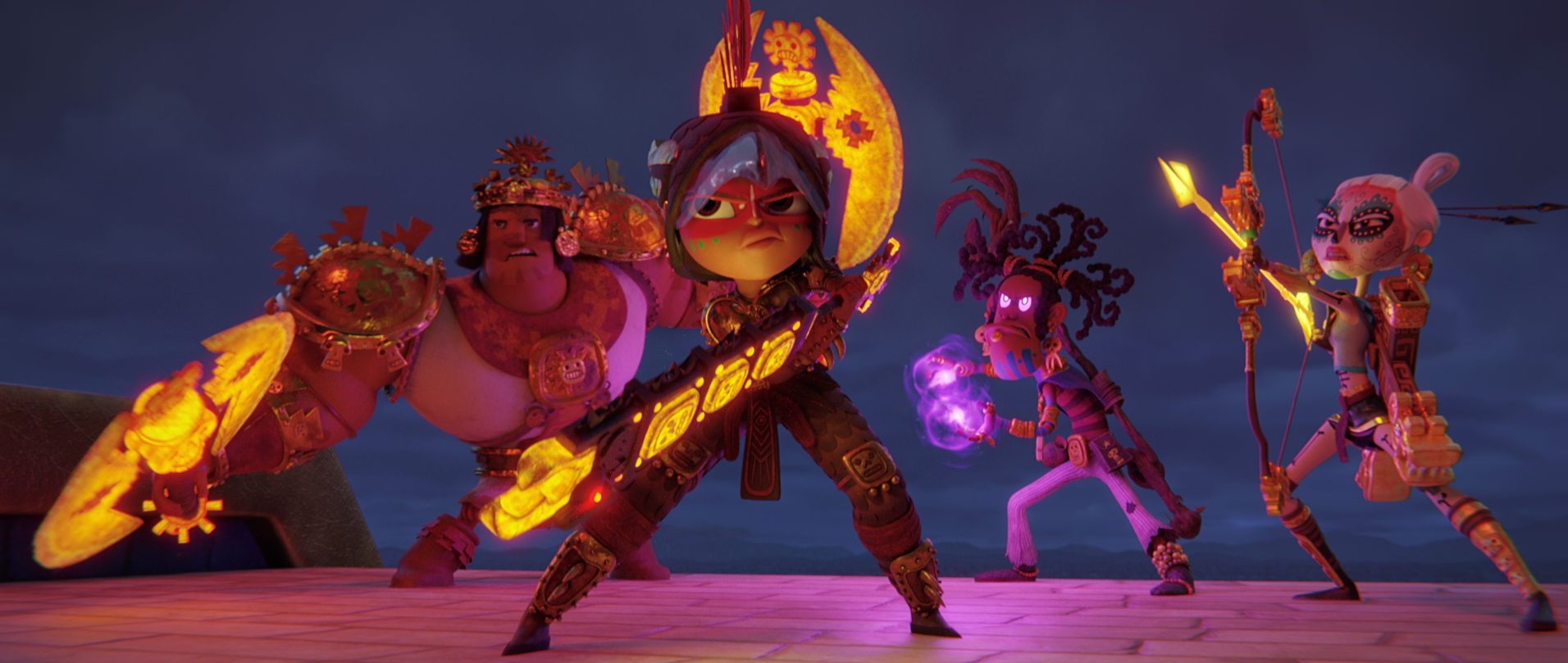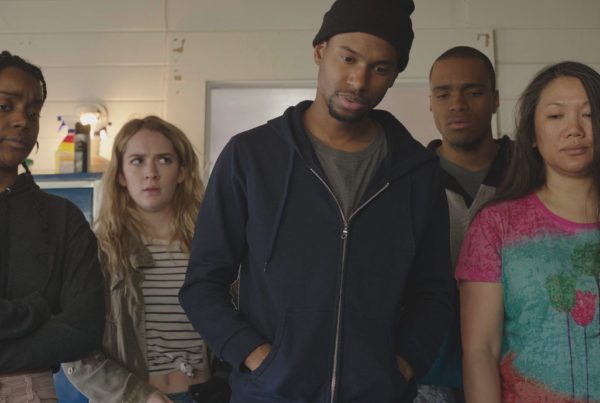Latino representation on streaming services lags far behind other groups, so much so that The Los Angeles Times called out Netflix earlier this year for having “a Latinx problem.” That was because less than 3% of Netflix original shows had Latino leads, co-leads, producers or creators, in 2018.
Though it doesn’t solve the entire problem, a new Netflix limited series could help move the needle in a positive direction. “Maya And The Three” is not only has Latino lead actors and a Latino creator, but its story also centers around a young, Mesoamerican warrior who’s epic journey celebrates the multicultural, indigenous roots of Latin America.
Creator Jorge Gutierrez joined Texas Standard to talk about the series, and his career as an animator. Listen to the full interview in the audio player above or read the interview in the transcript below.
This interview has been edited lightly for clarity.
Texas Standard: I think listeners may know your work from the show you created on Nickelodeon in 2007, “El Tigre: The Adventure of Manny Rivera,” or the 2014 movie, “The Book of Life.” What is it about animation that makes it the perfect complement to the stories you want to tell?
Jorge Gutierrez: I think just the fantasy nature of it, that we can do anything and we can reference paintings and sculptures, and in live action that would cost $300 million. But in animation, you know, we can spend less; we can spend $50 million.
You’re also a voice actor and get to voice Maya’s dad in this new series. As a father yourself, are you pulling from personal experience for that role?
Gutierrez: Yeah, I mean, I usually wrote from the point of view of the kids, but now I’m a father. I would watch movies back then and go, yeah, the parents just don’t understand. But now I go, hey, those parents are pretty smart.
Were you a big fan of animation growing up?
Gutierrez: Well, as you can imagine, everybody who is professional animator, we’re just grown-up kids. We never had to grow up, so we get to watch cartoons and make cartoons.
How did you come into this field? It must have taken a lot of prep work and and training.
Gutierrez: I’m originally from Mexico City, but I grew up in the border in Tijuana, and I wanted to be a painter and a writer, and somebody in my family said, “Hey, that’s animation. You can make paintings move.” So I have a very traditional Mexican dad who said, “If you can get into the hardest school in the world for this, I will let you maybe study it.” And I got into a school in Los Angeles called CalArts.
That is really neat. And so what do your dad and mom think of how far you’ve come?
Gutierrez: For a long time, they, obviously, were super worried, like all parents are, about their kid going into the arts. But I think after “Book a Life,” that’s when they were like, hey, this might work out for you.
The character designs of “Maya and the Three” are so rich in detail and color, and really play with scale. Though there’s the usual borders at the top and bottom of the screen, there are these moments of action where the boundary is actually broken and a sword breaks through. What’s the thought process behind that?
Gutierrez: I discovered a lot of giant, fantasy movies on television. I wasn’t able to go to the movies, so I wanted to bring that experience home instead of – [and] have characters literally reach out to try to touch the audience.
You played with format in other ways, too, including the length of each episode.
Gutierrez: I think what’s been great about Netflix and all the streamers is everything ends up at home. So, the formats can change. For me, having done a TV show and having done a movie, I said, “Well, I want the best of both worlds. I want a nine-episode, giant movie.”
Is there something conscious about that? Do you go into it thinking, “I’m just going to bust through the 30-minute barrier?” Or is it just serendipity as you’re developing the story, and making it longer just becomes a useful storytelling device?
Gutierrez: Well, having made a TV show, we were doing 22-minute episodes. So, just coming up with a random number of 30 seemed really crazy. And, you know, coming from television, we had to hit those numbers exactly. In streaming, it’s wide open. So it is kind of scary for someone who’s used to that order.
But it must also be really satisfying from an artistic standpoint.
Gutierrez: It’s a double-edged sword because then you can get too big and then you can’t afford it.
This series centers around Maya, who is of the Teca people. You pull from varying cultures of Mesoamerica like the Aztecs, Taíno people and Mayans. These cultures are often given little screen time. How does building an epic like Maya’s redefine stereotypes? Was than an objective of yours?
Gutierrez: I’ve always loved fantasy movies and books but I never got to see my culture, and I always wondered what happens if the camera goes south, right? Like, what if it goes to those other continents? What do those people look like? So that was kind of the inspiration. And then, I’m a big lover of “Lord of the Rings.” So to me, from the beginning, I said, well, I’m going to tell this mythological quest. But my main thing I’m also going to ask is, what if the ring was is a warrior princess? What if this thing that could change the world was alive?
One of the criticisms of “Lord of the Rings” there was that there was a lot of walking around. But here, you packed the story with action. Was that was that a conscious attempt to break with the “Lord of the Rings” format?
Gutierrez: Absolutely. I was that person in the audience with all those sweeping, walking and walking shots going, where are the fights? Give me the fights! So hopefully with “Maya,” we give them to you.
What has the reaction been like?
Gutierrez: We definitely showed it a ton. And you know, there’s some heavy stuff in the series – sacrifices and infidelity. There’s there’s some big telenovela – I grew up with novelas in Mexico. So there’s a lot of that stuff in there, too. And honestly, the reaction has been overwhelmingly positive. And what I love is that kids are getting everything. When we tested it with audiences – with older adults and little kids – kids were explaining it to the adults, and I love that. I would invite families and kids and people without kids to watch this thing because it really is an adventure, especially now where we don’t get to travel a lot. You get to travel back in time and you get to travel to Mexico and you get to travel to all these incredible places in Latin America. So enjoy this delicious, giant burrito that we cut into nine little rolls for you.
Did you have any characters that didn’t make it into the story?
Gutierrez: We have a lot of gods in this thing. And we had a really funny god, the God of Brooms who, unfortunately, did not make it into the movie. He got swept out of the film. And for anybody who loves the “Book of Life” and “El Tigre,” there are Easter eggs in this thing – connect the everything.
Any hints about where we should be looking?
Gutierrez: “El Tigre” [Easter egg] is on Chapter One, and then the “Book of Life” Easter egg’s in Chapter Eight.















